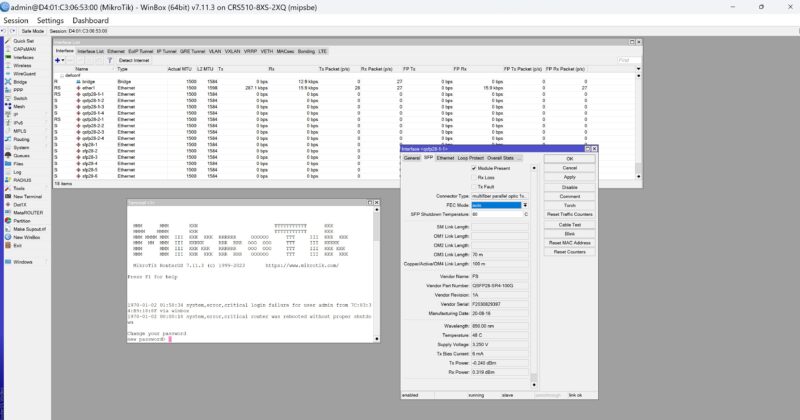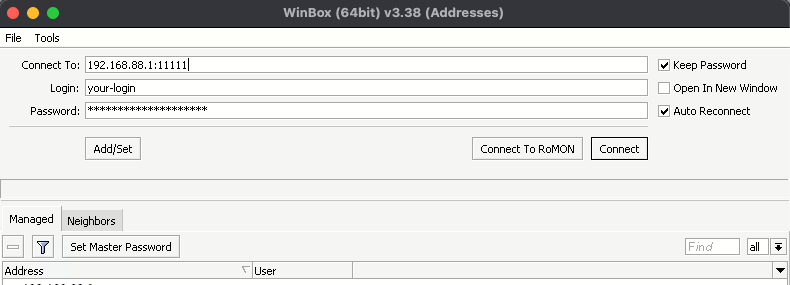Unlocking Network Management – Your Guide to Winbox Login for MikroTik Devices
Efficient network management is crucial for maintaining optimal connectivity and security in today’s digital environment. One of the most popular tools for configuring MikroTik routers and switches is Winbox. Whether you’re a seasoned network administrator or a beginner setting up your first device, understanding how to perform a Winbox login safely and effectively is essential. This comprehensive guide will walk you through the ins and outs of Winbox login, revealing expert tips and best practices to streamline your network management experience.
The Critical Role of Winbox Login in MikroTik Network Configuration

Getting access to your MikroTik device via Winbox login is often the first hurdle network administrators face when setting up or troubleshooting their network. Winbox serves as a Windows-based network management utility designed specifically for MikroTik hardware, emphasizing user-friendliness while providing powerful features for configuration, monitoring, and maintenance.
Before diving into the step-by-step process, it’s vital to understand that Winbox login isn’t just about entering credentials — it also entails understanding security considerations, network accessibility, and device readiness. Proper login procedures ensure your network remains protected from unauthorized access while enabling efficient management tasks.
In the following sections, we’ll explore the foundational steps for a successful Winbox login, explore troubleshooting techniques, and delve into advanced configuration methods to optimize your MikroTik management experience.
Preparing for Winbox Login – Ensuring Device Readiness and Security

Before attempting a Winbox login, adequate preparation is key to avoid connection issues and security vulnerabilities. Ensuring your device and network are configured appropriately can save time and mitigate risks.
Network Compatibility & Device Accessibility
Most MikroTik devices default to allow Winbox connections on the local network, utilizing either Ethernet or wireless interfaces. However, challenges can arise if the device’s IP address isn’t configured properly or if network firewalls block necessary ports. Verifying network availability includes checking for IP address consistency, ensuring your PC or management device is on the same subnet, and confirming that Winbox is installed correctly.
If you’re managing devices remotely, additional considerations involve VPN or SSH tunneling to ensure secure access. Failing to confirm network compatibility can result in connection timeouts or access denial, underscoring the importance of scrutinizing your setup.
Default Settings and Changing Default Passwords
Most MikroTik devices come with default login credentials, typically “admin” with no password. While this simplifies initial access, it poses significant security risks if left unchanged. For a safe Winbox login, change default passwords immediately upon first login — this practice prevents unauthorized access from malicious actors.
Configuring robust passwords, enabling firewall protections, and setting up user rights restrict unauthorized access and management permissions, making your network environment safer.
Firmware Updates and Device Configuration
Running outdated firmware can lead to compatibility issues and security vulnerabilities. Before attempting a Winbox login, it’s advisable to update your MikroTik device’s firmware to the latest stable version. This enhances compatibility with Winbox, introduces new features, and patches security loopholes.
Additionally, have your device’s configurations prepared for initial setup or troubleshooting processes, which might include resetting to factory defaults if you encounter persistent connection issues.
Step-by-Step Guide to Successful Winbox Login

Once your device is ready and secure, performing a Winbox login becomes straightforward. Following a methodical approach ensures a smooth connection process, whether you’re connecting locally or remotely.
Connecting Locally via Winbox: The Simple Path
Locally connecting to your MikroTik device via Winbox is the most straightforward method. When your PC is connected directly to the same network segment as your device, the process involves minimal steps.
First, launch Winbox and let the utility scan for available MikroTik devices in your network. If your device appears in the list, select it directly. If not, input the device’s IP address manually, ensuring it’s reachable within your network.
Upon selecting or entering the device details, input your login credentials. For initial setups, use the default username “admin” and no password, but do change this immediately after login.
Finally, click “Connect” and verify that the configuration window opens, granting access to your device’s settings. Be cautious with default credentials, and avoid leaving the device unsecured.
Connecting Remotely – Over the Internet or via VPN
Remote access introduces additional layers of complexity and security considerations. To perform a Winbox login over the internet, your MikroTik device must be configured to accept remote connections securely.
Using VPN tunnels or SSH port forwarding is highly recommended to maintain encrypted and private communication channels. Ensure your firewall rules permit Winbox’s default port 8291, or customize ports for enhanced security.
Configure your router’s remote access settings carefully, enabling only trusted IP addresses or networks to connect. Once properly set up, input your device’s public IP address or hostname in Winbox, along with your credentials, to establish a successful remote login.
Troubleshooting Common Connection Problems
Despite best preparations, connection failures can occur. Common issues include IP address mismatches, firewall blocking, or incorrect credentials. Address these problems by verifying network configurations, ensuring the device is powered on, and testing connectivity via ping or traceroute.
Also, check Winbox logs or error messages. If port 8291 is blocked, reconfigure firewall rules or enable alternative ports. Resetting the device to factory defaults and reattempting login can also resolve configuration errors.
Best Practices for Securing Winbox Login and Managing Your MikroTik Devices
Security should always be a priority when managing network hardware. Protecting your Winbox login credentials and device configurations prevents unauthorized access and potential network disruption.
Implementing Strong Authentication Measures
Use complex, unique passwords for all administrative accounts, combining uppercase and lowercase letters, numbers, and symbols. Enable two-factor authentication if available, and regularly review user rights to restrict access to sensitive configurations.
Limiting access to the Winbox management interface to specific IP addresses or subnets is a highly effective security measure, reducing exposure to external threats.
Regular Firmware Updates and Backup Procedures
Keep your MikroTik firmware up-to-date to benefit from security patches, new features, and stability improvements. Regularly backing up your configurations ensures that you can recover quickly in case of errors or security breaches, minimizing downtime.
Documenting device settings and maintaining a change log foster better management and accountability, especially when multiple administrators are involved.
Monitoring and Logging for Enhanced Security
Enable logging of Winbox and device activity to track login attempts, configuration changes, and access times. This audit trail helps identify suspicious activities early and responds proactively to potential threats.
Implementing intrusion detection systems and setting up alerts for abnormal activities further enhances your network security posture.
Navigating Advanced Winbox Features for Efficient Network Management
Beyond initial connection procedures, Winbox offers a suite of advanced features that facilitate efficient network management. Leveraging these tools can enhance performance, security, and troubleshooting capabilities.
Customizing Winbox Interface and User Experience
Winbox allows for interface customization, enabling administrators to tailor the workspace according to their preferences. Efficient layouts, color schemes, and shortcut setups accelerate navigation and configuration tasks.
Using multiple tabs and grouping features helps manage complex network environments with numerous devices, providing a centralized management dashboard.
Automating Routine Tasks via Scripts and Macros
Automation is a game-changer in network administration. Winbox supports scripting capabilities, allowing you to automate configuration backups, firmware updates, or monitoring routines.
By developing scripts for repetitive tasks, you can reduce manual effort and minimize human error. Executing these scripts via the Winbox interface simplifies complex sequences, ensuring consistency across your network devices.
Monitoring and Analyzing Network Traffic
Winbox provides real-time traffic monitoring tools, including graphing features and interface statistics. These insights help identify bottlenecks, Unauthorized device access, or unusual traffic patterns.
Regular analysis allows proactive capacity planning and security posture enhancement, making your network resilient to both performance issues and security threats.
Conclusion
Mastering the Winbox login process is a fundamental skill for anyone managing MikroTik devices, whether locally or remotely. Proper preparation, understanding security best practices, and familiarity with advanced features empower network administrators to maintain efficient, secure, and reliable network infrastructures. By following comprehensive steps to connect safely, leveraging automation, and continuously monitoring device activity, managing MikroTik networks becomes not just manageable but optimized for growth and security.
